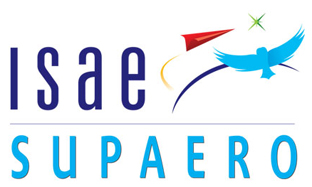EEG Spectral Power Changes in Patients With Dysexecutive Syndrome Following Cognitive Intervention
Résumé
ABSTRACT Background Acquired brain injury (ABI) leads to cognitive deficiencies, alteration of brain activity associated with an increase in slow‐wave (delta and theta bands) power, and reduced fast‐wave (alpha, beta, and gamma bands) power. To compensate for the cognitive deficits that impact autonomy and quality of life, patients in a chronic phase can benefit from cognitive intervention. Objective This study explores the effects of cognitive intervention on brain activity, measured by electroencephalography (EEG), and on executive functioning, assessed by the Test of Attentional Performance (TAP) battery. Method We provided an ecological rehabilitation intervention, simulating real‐life tasks adapted for patients with chronic cognitive disorders. A single‐case experimental design (SCED) assessed patients' performance in terms of correct responses percentage (CRs) and reaction times (RTs), and EEG spectral powers before and 1 month after the intervention. The TAP tasks included working memory (WM), divided attention (DA), inhibition (GO), and flexibility (FL). EEG frequency powers were also measured during resting states. Results One month after the intervention, significant improvements were observed in CRs and RTs for the FL task. Increases in all frequency band powers occurred during FL, WM, and DA tasks, except for alpha bands in DA. In the GO task, delta and gamma power also increased after the intervention. No significant changes were found during resting‐state EEG. The results of this open study, without a control group, are preliminary. Conclusion The effects of the therapy are mostly reflected by changes in mental FL performance and altered EEG patterns during cognitive tasks, particularly in slow and fast‐frequency bands. We argue that cognitive intervention could amplify the compensatory mechanisms following brain damage and/or ease restoration mechanisms in the fast‐frequency activity bands. Further SCEDs or studies with control groups are needed to confirm these findings and the role of EEG biomarkers in rehabilitation.
Mots clés
acquired brain injury | cognitive training | EEG | power spectral analysis ABI
acquired brain injury ANR
French National Research Agency CR
correct responses DA
divided attention DGA
Defence Procurement Agency EEG
electroencephalography FL
flexibility GAS
Goal Attainment Scaling GO
GoNoGo (inhibition task) HD
high-definition mRS
modified Rankin score NIHSS
National Institutes of Health Stroke Scale rDLPFC
right dorsolateral prefrontal cortex RT
reaction time SCED
single-case experimental design T0
evaluation time before the start of the intervention TAP
Test of Attentional Performance TBI
traumatic brain injury TF + 1
evaluation time 1 month after the end of the intervention tRNS
transcranial random noise stimulation WM
working memory
acquired brain injury
ANR
French National Research Agency
CR
correct responses
DA
divided attention
DGA
Defence Procurement Agency
EEG
electroencephalography
FL
flexibility
GAS
Goal Attainment Scaling
GO
GoNoGo (inhibition task)
HD
high-definition
mRS
modified Rankin score
NIHSS
National Institutes of Health Stroke Scale
rDLPFC
right dorsolateral prefrontal cortex
RT
reaction time
SCED
single-case experimental design
T0
evaluation time before the start of the intervention
TAP
Test of Attentional Performance
TBI
traumatic brain injury
TF + 1
evaluation time 1 month after the end of the intervention
tRNS
transcranial random noise stimulation
WM
Domaines
Neurosciences
Fichier principal
 Lebely et al. - 2024 - EEG Spectral Power Changes in Patients With Dysexe.pdf (1)
Télécharger le fichier
Lebely et al. - 2024 - EEG Spectral Power Changes in Patients With Dysexe.pdf (1)
Télécharger le fichier
| Origine | Fichiers produits par l'(les) auteur(s) |
|---|---|
| licence |




